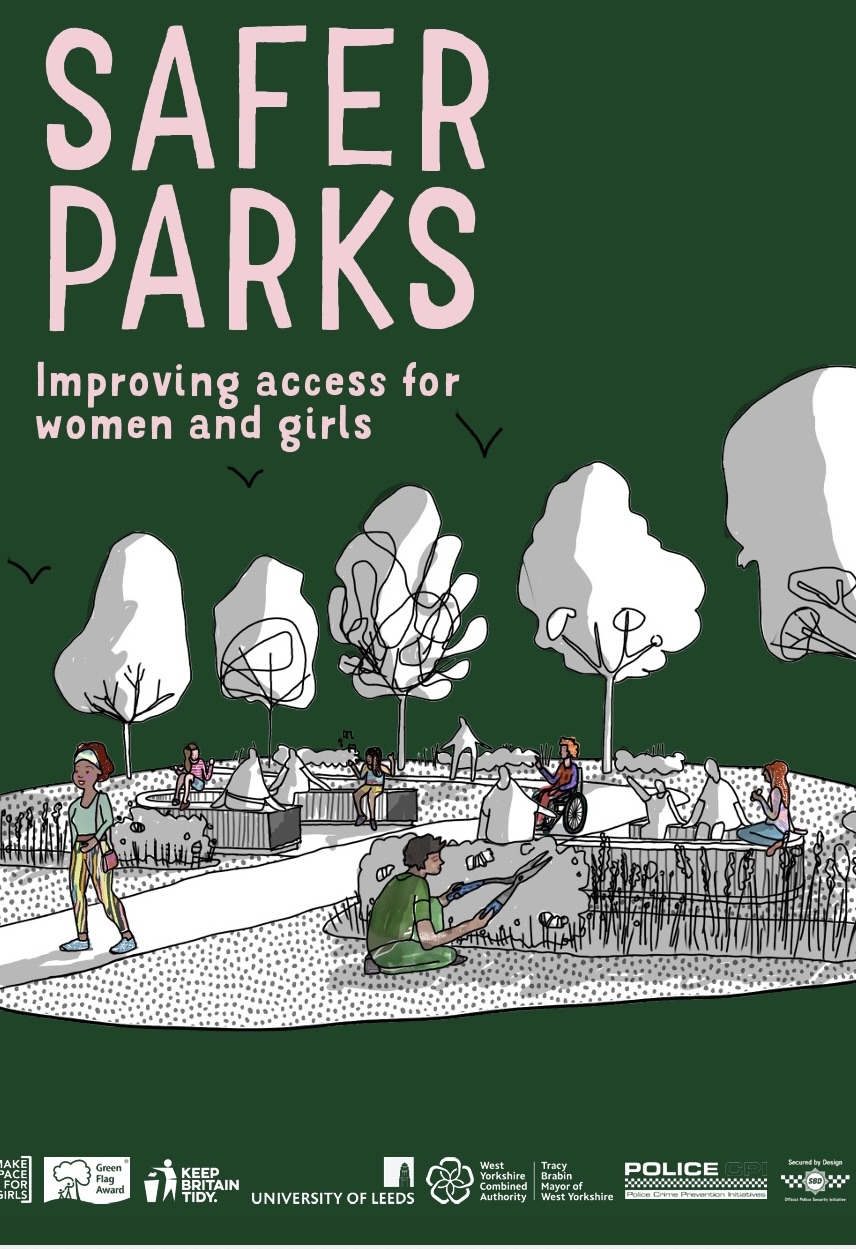You may have spotted from some of our recent posts that we have been celebrating the publication of the second edition of Safer Parks: Improving Access for Women and Girls. Make Space for Girls was part of the amazing team that produced the first edition of this ground break guidance in May 2023 and it was great to see the launch of the second edition at the Police Solving National Police Solving Problems Conference in September 2025.
As with the first edition, the guidance is introduced by Tracy Brabin, Mayor of West Yorkshire. But this second edition also has two new forewords by Paul Todd, Green Flag Award Manager, Keep Britain Tidy and Guy Ferguson, Chief Executive Officer Police Crime Prevention Initiatives. Paul’s contribution to the guidance and his team’s support of its use over the last two years has been fantastic, not least because the guidance now forms part of the Green Flag Award assessment framework. But this is the first time that guidance like this has had direct support from Police CPI, recognising that safety in parks isn’t a “nice to have”- it’s a fundamental part of keeping communities safe from crime.
For Make Space for Girls, a big part of the value of this guidance lies in the fact that it is rooted in a detailed exploration of the views of women, girls and parks professionals about what makes a park feel safe/unsafe. The research, using “Q methodology”, asked 50 girls aged 13-18 to rank 49 statements about park safety on a scale from +5 (‘most like my view’) to -5 (‘most unlike my view’). The statements covered a wide range of issues, about the structure of the park, the behaviour of others, the role of information and their own behaviour. For example
“Fences or walls around the edges of parks make me feel safer”
“Everyday harassment of women and girls in public places, for example unwanted comments and attention, makes me feel unsafe in parks”
“Relevant authorities, for example the police or council, don’t do enough about harassment of women and girls in parks”
“Hearing about other women suffering bad experiences in parks makes me fearful of going to parks myself”
“It is safer to challenge unwanted comments or attention from men and boys in parks than to ignore them”
“As long as women and girls take personal safety measures in parks, they can be safe”
“Walking boldly and confidently would make me feel safer in parks”
When the ranking of all 49 statements was analysed, the views of the teenage girls fell into 3 broad camps:
- Those who took the view that it’s men and boys generally - for a teenage girls they are a threat wherever they are in the public realm; society needs to change;
- Those who took the view that it’s the people in the park, often large groups of teenage boys - intimidation and harassment in the park; this needs to change;
- Those who took the view that although parks may feel unsafe, there’s much that can be done to make parks feel safer, such as more security, lots of exits, visible staffing and policing, better facilities and fostering busyness.
We know from the Make Space for Girls Parkwatch research that 92% of the teen users of MUGAs are boys and young men as are 84% of the user of skateparks. If councils want to change “people in the park” so that parks feel safer for young women and girls, they need to change the teenage spaces they provide. This is not about reducing the number of teenage boys in the park: it is about increasing the numbers of teenage girls by creating teen play spaces where teenage girls and gender diverse young people feel they belong.





